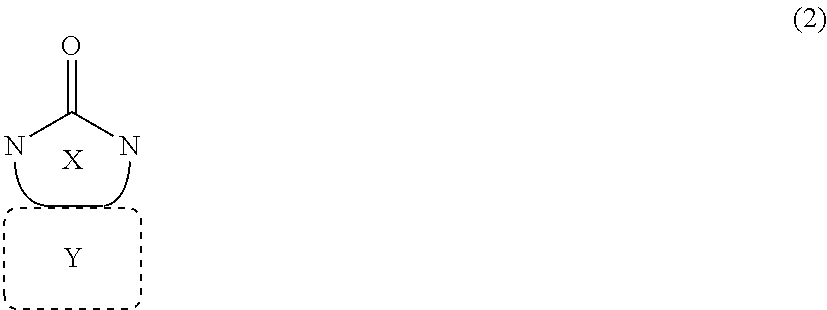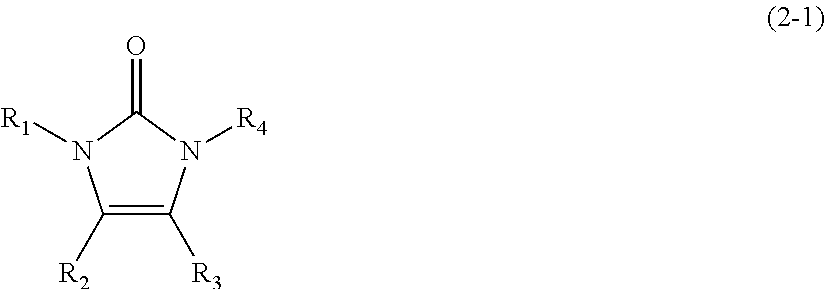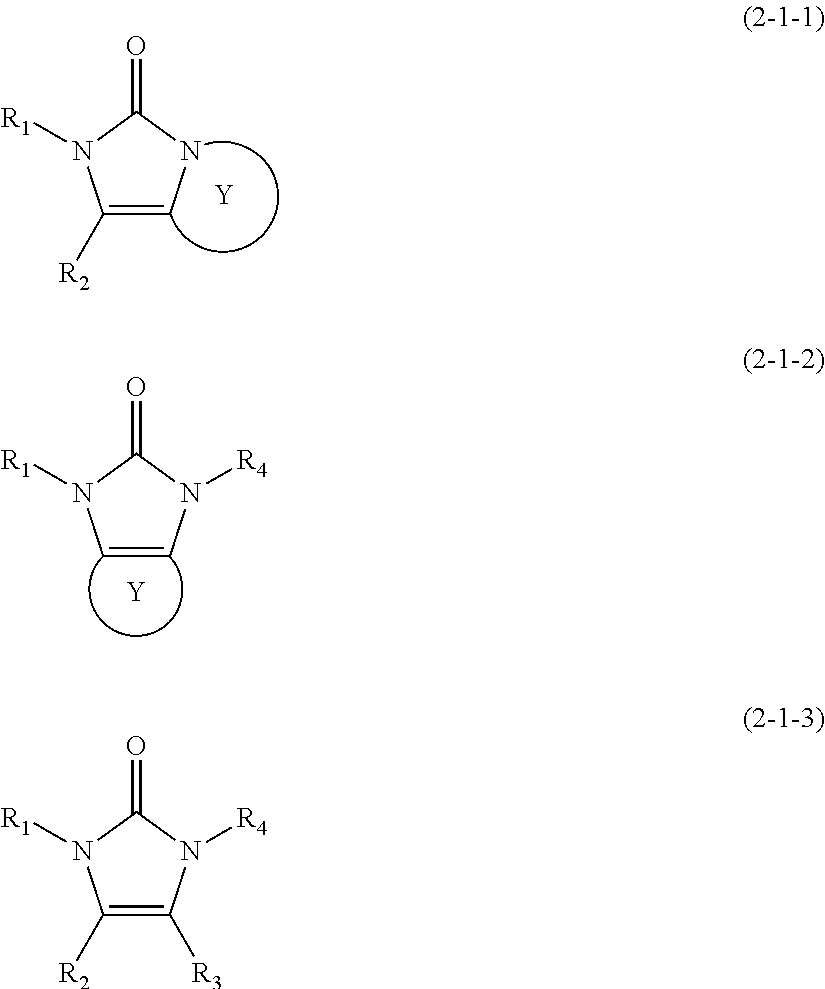Nitrogenated heterocyclic derivative, electron-transporting material for organic electroluminescent elements, and organic electroluminescent element using same
a technology of electron transporting materials and organic electroluminescent elements, which is applied in the direction of thermoelectric devices, organic compounds, organic chemistry, etc., can solve the problems of low emission efficiency, significant deterioration in properties, and the inability to put the organic el device into practical use, and achieve high emission efficiency
- Summary
- Abstract
- Description
- Claims
- Application Information
AI Technical Summary
Benefits of technology
Problems solved by technology
Method used
Image
Examples
synthesis example 1
(a) Synthesis of Compound 1
[0296]Compound 1 was synthesized according to the following scheme.
(a-1) Synthesis of Intermediate 2
[0297]In an argon atmosphere, a mixture of (4-bromophenyl)-(2-nitrophenyl) amine (Intermediate 1) (16.3 g, 62 mmol), chloroform (100 mL), and triethylamine (17.3 mL, 124 mmol) was cooled to 0° C., and then, stirred at room temperature for 2 h after adding ethyl chloroformate (11.8 mL, 124 mmol) dropwise. The reaction solution was diluted with dichloromethane. The organic layer was washed with a saturated saline solution, dried over magnesium sulfate, and concentrated. The obtained solid was washed with hexane and dried under reduced pressure to obtain Intermediate 2 as a white solid (18.5 g, yield: 91%).
(a-2) Synthesis of Intermediate 3
[0298]In an argon atmosphere, Intermediate 2 (18.5 g, 55 mmol) was added to sodium ethoxide (36.6 g, 537 mmol) and absolute ethanol (2.6 L) at room temperature. The resultant mixture was refluxed for 3.5 h under heating. After...
synthesis example 2
(b) Synthesis of Compound 2
[0301]Compound 2 was synthesized according to the following scheme.
(b-1) Synthesis of Intermediate 6
[0302]A mixture of Intermediate 3 (5.0 g, 17 mmol), sodium hydroxide (2.1 g, 52 mmol), iodomethane (8.6 mL, 138 mmol), and absolute methanol (100 mL) was stirred at room temperature for 16 h. The solid generated by adding water was collected by filtration, washed with water, and dried under reduced pressure to obtain 5.1 g (yield: 98%) of a white solid, which was identified as Intermediate 6 by FD-MS.
(b-2) Synthesis of Compound 2
[0303]The procedure of Synthesis Example 1 (a-4) was repeated by using Intermediate 6 in place of Intermediate 4 and using Intermediate 7 in place of Intermediate 5. The obtained compound was identified as Compound 2 by FD-MS.
synthesis example 3
(c) Synthesis of Compound 3
[0304]Compound 3 was synthesized according to the following scheme.
(c-1) Synthesis of Intermediate 9
[0305]In an argon atmosphere, 1-(3-dimethylaminopropyl)-3-ethylcarbodiimide hydrochloride (23.5 g, 122 mmol) was added at room temperature to a mixture of 4-bromo-2-nitrobenzoic acid (Intermediate 8) (25.0 g, 102 mmol), 1,2-phenylenediamine (11.0 g, 102 mmol), and pyridine (200 mL), and the resultant mixture was stirred for 4.5 h. The solid generated by adding water was collected by filtration, washed with water, and dried under reduced pressure to obtain Intermediate 9 (27.8 g, yield: 81%) as a yellow solid.
(c-2) Synthesis of Intermediate 10
[0306]In an argon atmosphere, acetic acid (260 ml) was added to Intermediate 9 (26.0 g, 77 mmol), and the mixture was refluxed for 14 h under heating. After cooling, the mixture was neutralized by a 20% aqueous solution of sodium hydroxide. The generated solid was collected by filtration, successively washed with a satur...
PUM
 Login to View More
Login to View More Abstract
Description
Claims
Application Information
 Login to View More
Login to View More - R&D
- Intellectual Property
- Life Sciences
- Materials
- Tech Scout
- Unparalleled Data Quality
- Higher Quality Content
- 60% Fewer Hallucinations
Browse by: Latest US Patents, China's latest patents, Technical Efficacy Thesaurus, Application Domain, Technology Topic, Popular Technical Reports.
© 2025 PatSnap. All rights reserved.Legal|Privacy policy|Modern Slavery Act Transparency Statement|Sitemap|About US| Contact US: help@patsnap.com



